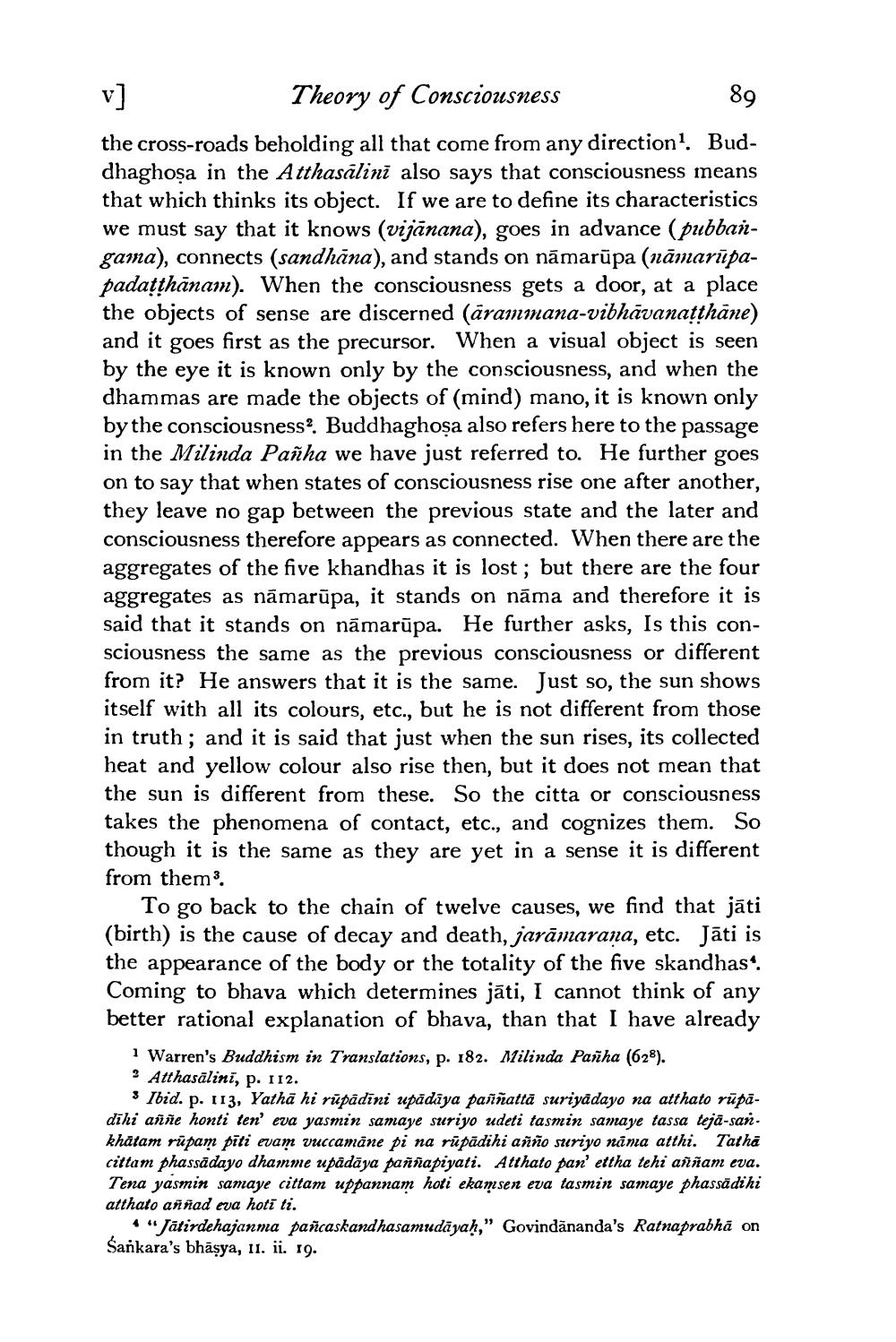________________
89
Theory of Consciousness the cross-roads beholding all that come from any direction! Buddhaghosa in the Atthasālini also says that consciousness means that which thinks its object. If we are to define its characteristics we must say that it knows (vijānana), goes in advance (pubbangama), connects (sandhāna), and stands on nămarūpa (nāmaripapadatthānai). When the consciousness gets a door, at a place the objects of sense are discerned (ārammana-vibhāvanatthāne) and it goes first as the precursor. When a visual object is seen by the eye it is known only by the consciousness, and when the dhammas are made the objects of (mind) mano, it is known only by the consciousness? Buddhaghosa also refers here to the passage in the Milinda Pañha we have just referred to. He further goes on to say that when states of consciousness rise one after another, they leave no gap between the previous state and the later and consciousness therefore appears as connected. When there are the aggregates of the five khandhas it is lost; but there are the four aggregates as nāmarūpa, it stands on näma and therefore it is said that it stands on nămarūpa. He further asks, Is this consciousness the same as the previous consciousness or different from it? He answers that it is the same. Just so, the sun shows itself with all its colours, etc., but he is not different from those in truth; and it is said that just when the sun rises, its collected heat and yellow colour also rise then, but it does not mean that the sun is different from these. So the citta or consciousness takes the phenomena of contact, etc., and cognizes them. So though it is the same as they are yet in a sense it is different from them.
To go back to the chain of twelve causes, we find that jāti (birth) is the cause of decay and death, jarāmarana, etc. Jāti is the appearance of the body or the totality of the five skandhas. Coming to bhava which determines játi, I cannot think of any better rational explanation of bhava, than that I have already
1 Warren's Buddhism in Translations, p. 182. Milinda Pañha 628). ? Atthasālini, p. 112.
3 Ibid. p. 113, Yathā hi rūpādīni upādāya paññattā suriyadayo na atthato rūpādihi anne honti ten' eva yasmin samaye suriyo udeti tasmin samaye tassa tejă-san. khatam rūpam piti evam vuccamane pi na rūpādihi añño suriyo nāma atthi. Tatha cittam phassādayo dhamme upādāya paññapiyati. Atthato pan' ettha tehi aññam eva. Tena yasmin samaye cittam uppannam hoti ekamsen eva tasmin samaye phassādihi atthato aññad eva hoti ti.
• "Jātirdehajanma pañcaskandhasamudāyaḥ," Govindananda's Ratnaprabha on Sankara's bhäsya, 11. ii. 19.
citiam phassadayo atuam vuccamāne mise suriyo udeti tasmiyadayo na atthato vi
Att hato premio nama casa teid




